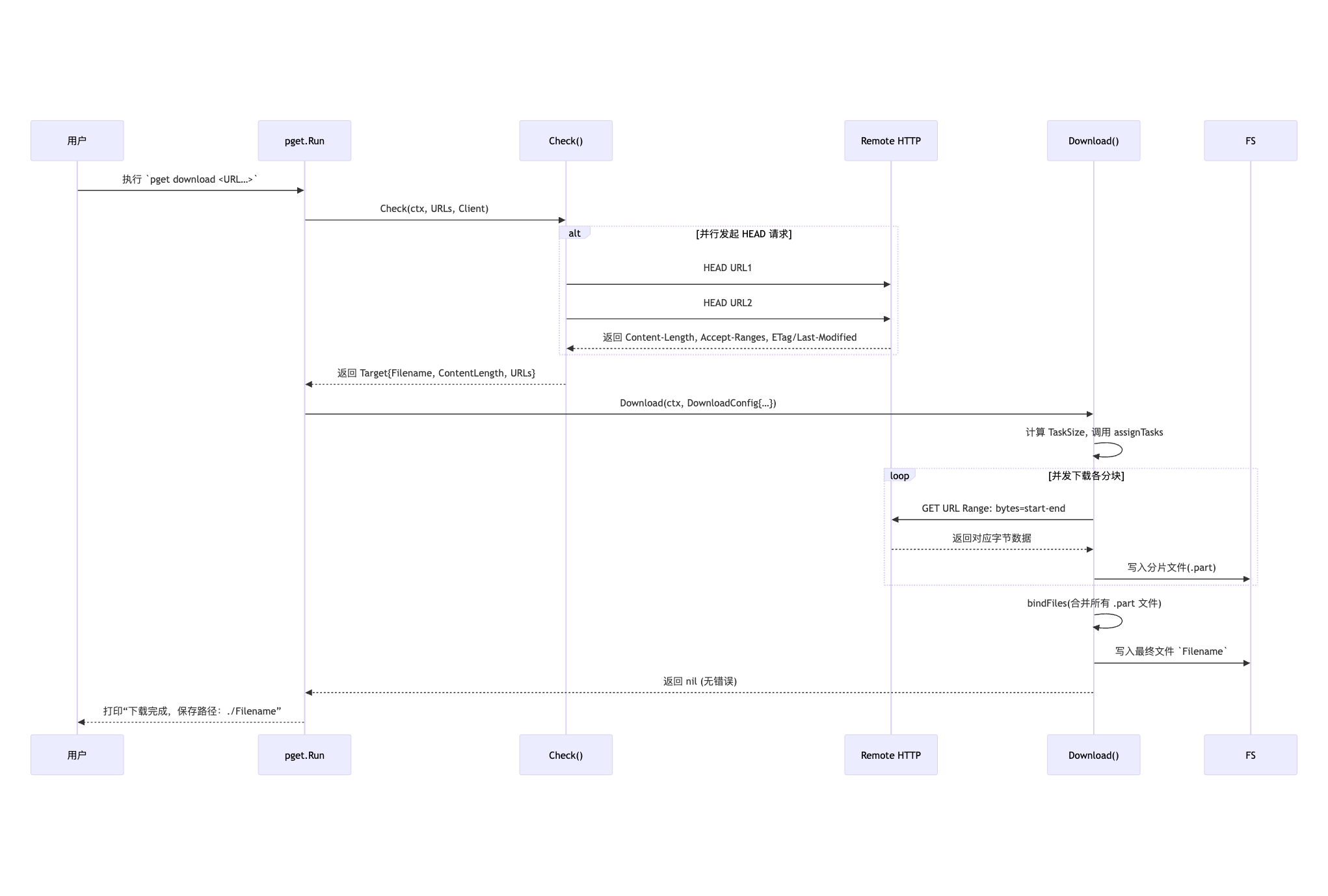pget 下载器
使用
基于原版添加了代理功能,可以通过指定代理来下载文件 pget -x http://127.0.0.1:7897 URL
shell
Pget v1.0-2-gae9a8cf, The fastest file download client
Usage: pget [options] URL
Options:
-h, --help print usage and exit
-p, --procs <num> the number of connections for a single URL (default 1)
-o, --output <filename> output file to <filename>
-t, --timeout <seconds> timeout of checking request in seconds (default 10s)
-u, --user-agent <agent> identify as <agent>
-r, --referer <referer> identify as <referer>
-x, --proxy http(s) proxy URL, e.g. http://127.0.0.1:7897
--check-update check if there is update available
--trace display detail error messages下载:
- 原版(无代理功能):https://github.com/Code-Hex/pget
- 有代理功能的版本:https://github.com/howard12358/pget ,其他版本请自行编译
设计
为什么没有下载多个 (不同) 链接的功能?
主要原因在于 pget(以及很多“多线程加速下载”工具)设计时,是把重点放在 单个大文件 的加速上,而不是批量下载多个文件。具体来说:pget 的设计定位是单文件分段并发
- pget 核心功能是对同一个 URL 发起多个并行请求(HTTP Range),把一个大文件拆成很多小段同时下载,然后再合并。这能大幅提高对单个大文件的下载速度。
- 而“同时下载多个文件”这种场景,更多是把一个 URL 列表当队列,串行或简单并发地消费。这个需求在脚本级别(Bash、PowerShell)里很容易实现,也有专门的批量下载工具(比如 wget 本身就可以通过
-i list.txt串行下载、aria2 可以通过--max-concurrent-downloads做并发队列),所以 pget 并没有把它当核心功能来做。
通过多个镜像链接下载这个功能有什么用?
镜像下载(multi‑mirror)的场景
- pget 里支持的“多个镜像 URL”功能,它是为了 可靠性和速度 而设计的:当一个大文件在不同服务器/CDN 上有多个镜像时,pget 可以把各个分段请求分配到不同镜像上取,既能提高带宽利用率,也能保证某个镜像临时挂掉时由另外的镜像补下载。
- 这类功能常见于 Linux 发行版 ISO、软件安装包、视频素材大文件的多源分发。厂商会在全球布置若干镜像站点,用户拿到一个“镜像列表”,pget 就能同时从多个站点拉取不同区间的数据。
时序图

mermaid
mermaid
sequenceDiagram
participant 用户
participant CLI as pget.Run
participant Check模块 as Check()
participant 远程资源 as Remote HTTP
participant Download模块 as Download()
participant 文件系统 as FS
用户->>CLI: 执行 `pget download <URL…>`
CLI->>Check模块: Check(ctx, URLs, Client)
alt 并行发起 HEAD 请求
Check模块->>远程资源: HEAD URL1
Check模块->>远程资源: HEAD URL2
远程资源-->>Check模块: 返回 Content-Length, Accept-Ranges, ETag/Last-Modified
end
Check模块-->>CLI: 返回 Target{Filename, ContentLength, URLs}
CLI->>Download模块: Download(ctx, DownloadConfig{…})
Download模块->>Download模块: 计算 TaskSize, 调用 assignTasks
loop 并发下载各分块
Download模块->>远程资源: GET URL Range: bytes=start-end
远程资源-->>Download模块: 返回对应字节数据
Download模块->>文件系统: 写入分片文件(.part)
end
Download模块->>Download模块: bindFiles(合并所有 .part 文件)
Download模块->>文件系统: 写入最终文件 `Filename`
Download模块-->>CLI: 返回 nil (无错误)
CLI-->>用户: 打印“下载完成,保存路径:./Filename”